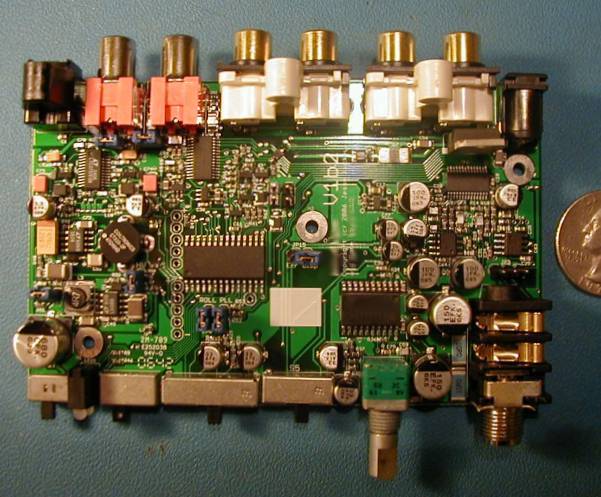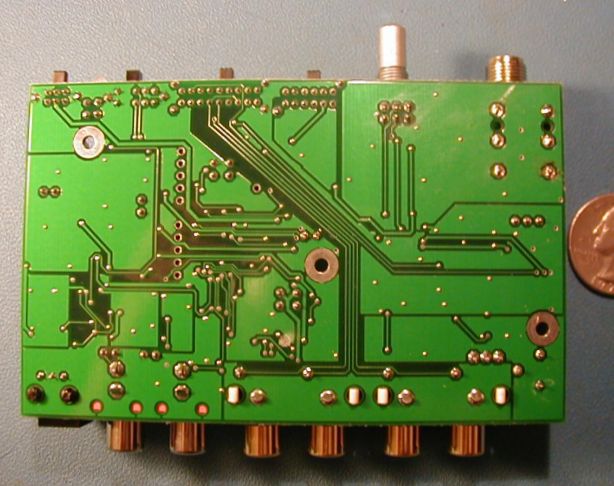Portable SPDIF & analog input DAC
and high performance headphone amp
This web page documents the development of this product. This is
a
shipping commercial product; pricing approx $400, inquire for details.
Board is 4.5" x 2.75", 4 layer
Design timeframe: August 2005 - August 2006
Last webpage update: May 20, 2007
Top View:

Bottom View:

This product
was developed to address the needs of high performance monitoring at
on-location recording and to bring audiophile-grade headphone listening
to the myriad of portable audio devices in the modern age. With
good headphones the improvements over the $4 headphone amplifiers found
in most gear is amazing.
Basic features:
- Runs on one or two 9V batteries, hot swappable.
- 2 Coax and 1 Toslink digital input, as well as unbalanced analog
in.
- SPDIF lock and 5 steps of battery level indication.
- Drives ALL headphones to ear-cooking volumes, including 600-ohm
AKGs.
- Unlike other headphone amplifiers, this can run on one 9V and
will drive 600-ohm headphones to full specifications for the entire
battery output voltage range. Degraded analog performance and
clipping as the battery drains is unacceptable.
- SPDIF input handles all rates/bit depths, from 32KHz/16 to
192Khz/24.
- Unbalanced output is high-performance DAC with SPDIF in or
unbuffered "passthru" with analog in.
Design
Creating products that are small sized, battery powerable, pro-audio /
audiophile performance and sanely priced is no mean trick.
Careful board layout, 3 design iterations, and exhaustive testing are
required. Out-of-left-field problems like physical IC design bugs
in the SPDIF receiver (not locking to single-speed rates if it was just
running at quad), the DAC (not fully powering down when told to if it
doesn't recieve clocks from serial audio in), and the first
potentiometer used (manufacturing problem with the taper at full
clockwise). These issues were identified and fully resolved by
firmware enhancements and switching manufacturers.
As a commercial product, I can't go into the specifics such as part #s
and proprietary analog design details. What can be said: there
are 4 dc/dc converters with LDO and ferrite-bead post-regulation, a PIC
microcontroller to run the show with software designed for it to run
with low power, smart powering-down of digital stuff when in analog
mode, turning off the Toslink input when a coax input is selected,
etc. Extensive use of film caps, 6 separate ground pours, careful
trace layout, 18 different Audio Precision tests (on every board
produced!) and even a gold-plated headphone jack are some of the
details that went into producing this design.
The headphone amplifier is super-beefy as well as high fidelity.
The "R&D" prototype, made to
verify manufacturer performance specifications and signal flow design
has been running the 8-ohm
studio monitor speakers I use for playing music on the computer (mostly
my 600 CD collection FLAC encoded and the marvellous soma fm) all day most days for two
years. (I gotta get out more.)
Home

